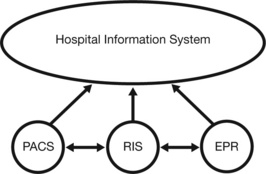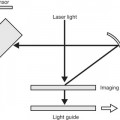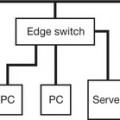4 Computers in hospitals
The Advantages of Computerisation
| Eliminates Repetitive Tasks |
• Repetitive form-filling not required
• Once a patient’s name has been entered, it should not have to be re-entered
|
| Eliminates Paper Handling and Filing | Elimination of hardcopies of: |
• Request forms
• Reports
• Films
• Paper records
• Referral letters
Improves Interdepartmental CommunicationsVirtually instant access to:
• Existing patient records films/images
• Previous reports
• New images and reports
• Laboratory tests and results
• Referral letters
Improves efficiencyElimination of:
• Manual filing of films/images
• Manual retrieval of films/images
• Need to copy images
• Need to file images separate from patient records
Improves Confidentiality and Security
• Files, reports and patient details can be very secure
• Passwords would only allow access to specific levels of information
Automated Data CollectionImproves information handling on, e.g.:
• Staffing
• Budgeting
• Patient attendances
• Use of equipment
• Servicing
• Research
| Overview |
• Examination request is made, including clinical details
• The request is accepted (or rejected)
• The appointment is made
• Instructions and information sent to the patient
• DICOM worklist is generated
• The examination is completed and it is electronically signed that the work has been done
• Images sent to PACS
• PACS acknowledgement of receipt of the images
• Additional examinations/images added to file using PACS and DICOM
• The image, notes and clinical details placed on PACS workstation
• Image is reported on using voice recognition software
• The report is electronically signed
• Text is automatically available on:
|
Integrating Health Enterprise (IHE)An initiative introduced in 1999
Aim:
• To bring together manufacturers of clinical information systems, PACS systems and imaging equipment
Individual Computer SystemsOverview
• The hospital information system (HIS) is the central hub
• DICOM is the protocol used so that the different parts can communicate with each other
Web-based IntegrationWorks in a similar way to the World Wide Web and has:
• An internet server
• A search engine
• Stores information on the web
• RIS and HIS, etc. are stored as data sets
• User can browse the individual data sets
Advantages
• Upgrades can be done on the central server
• Navigation is done using a mouse
• Hyperlinks can be used to aid the search facility
Digital Imaging and Communications in Medicine (DICOM)An initiative sponsored by the Radiological Society of North America and the Health and Management Systems SocietyAim
• To integrate information and management systems so that clinical information can be communicated among all specialities and providers
• Any doctor will eventually have access to a wide range of tests and images, on computer
• The primary concern is patient confidentiality
Stay updated, free articles. Join our Telegram channel

Full access? Get Clinical Tree














